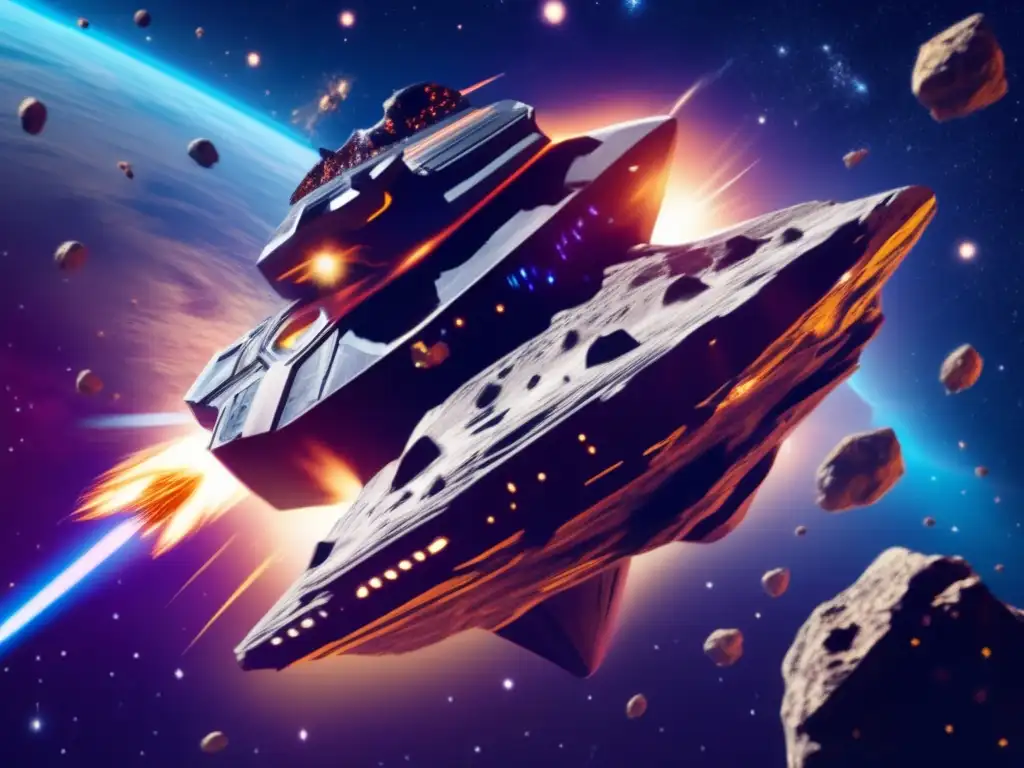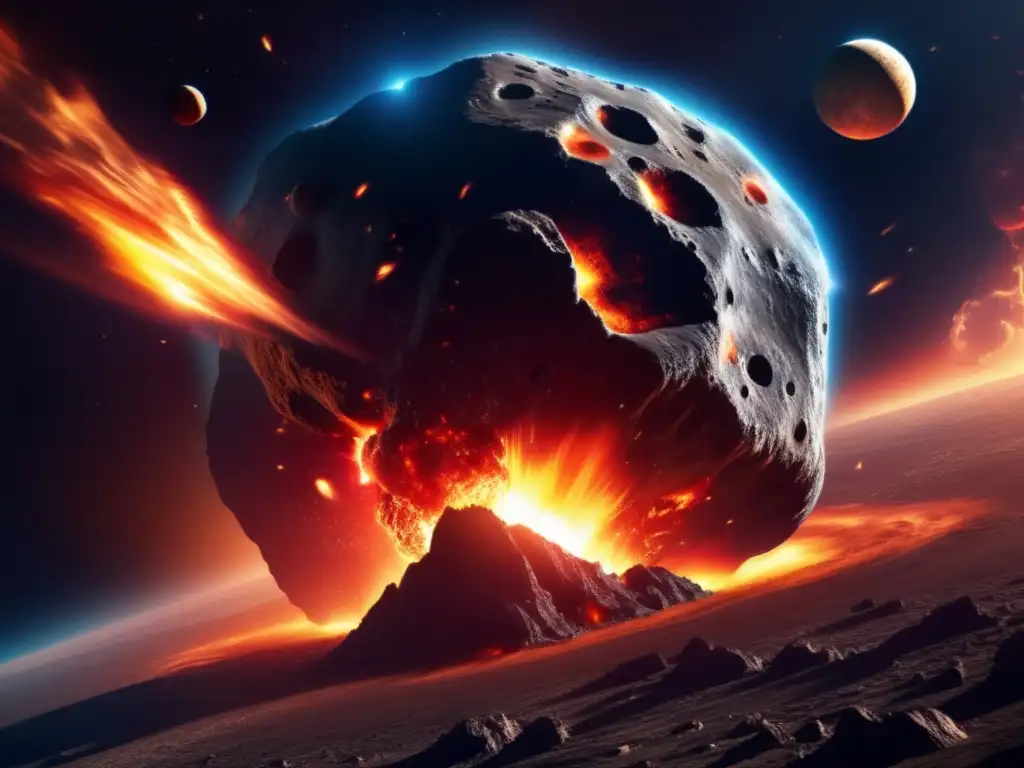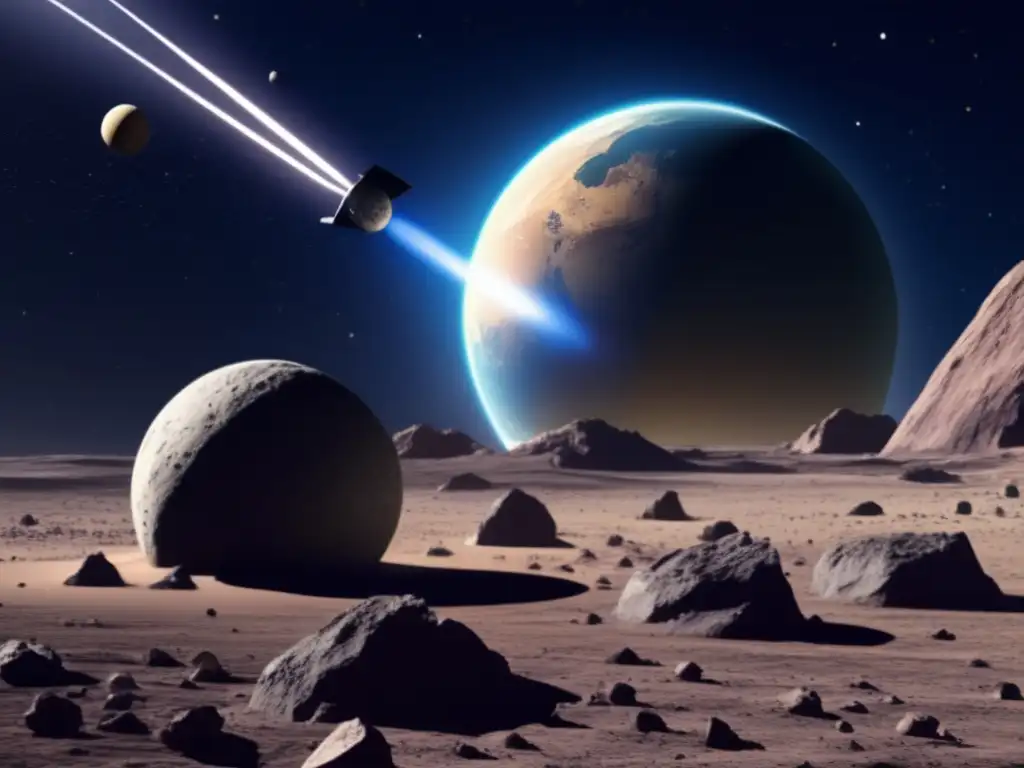Guarding The Galaxy: Planetary Defense Against Asteroid Impacts

Introduction
Asteroid impacts have been a subject of concern for scientists and governments for many decades. The catastrophic effects that asteroids can have on our planet are well known, and while the likelihood of a major impact is relatively low, the consequences would be so dire that we must take steps to protect ourselves. This article will explore the various methods that have been developed to guard the galaxy against asteroid impacts and minimize the potential threats they pose.
The Chelyabinsk Event: A Wake-Up Call

The Impact
The Chelyabinsk meteor of February 15, 2013 was a wake-up call for the world. The asteroid, estimated at 17-20 meters in diameter, entered the earth's atmosphere at around 60 times the speed of sound. Its intense heat generated by the friction with the atmosphere caused the body to explode about 30 km above the ground, releasing an energy equivalent to approximately 500 kilotons of TNT—an amount ten times greater than the Hiroshima atomic bomb. The explosion caused widespread damage in the surrounding area and injured around 1,500 people.
The Response
The Chelyabinsk event highlighted the need for better protection against potentially hazardous asteroids. Following the event, several countries initiated programs aimed at identifying and tracking near-Earth asteroids. In addition, there has been a renewed focus on developing new technologies to intercept and redirect asteroids before they can pose a risk to our planet.
The Importance of Preparedness
While the Chelyabinsk event was not a global catastrophe, it underscored the importance of preparedness. As such, scientists and engineers worldwide continue to research and develop new measures for planetary defense. The following sections will focus on some of the more promising technologies and techniques in development.
Deflecting Asteroids: Methods and Techniques

Kinetic Impactor
The kinetic impactor method is designed to divert an asteroid from its collision course with Earth by slamming a spacecraft into it at high speed. As the spacecraft collides, it imparts a small amount of momentum to the asteroid, changing its trajectory and avoiding a potentially disastrous impact. There are several challenges associated with this technique, including the precision required to hit the asteroid accurately and the problem of determining the asteroid's composition, which can affect the effectiveness of the impactor. NASA’s DART (Double Asteroid Redirection Test) mission, currently in development, will test the efficacy of the kinetic impactor method using the binary asteroid system Didymos as its target.
Gravity Tractor
The gravity tractor method involves the use of a spacecraft to exert a small but continuous gravitational force on the asteroid, pulling it out of its original trajectory. By hovering near the asteroid, the spacecraft uses its gravity to subtly alter the asteroid's path over a long period. This technique is better suited for larger asteroids and requires considerable patience, as realigning an asteroid’s trajectory could take several years. In 2005, NASA’s Deep Impact spacecraft successfully demonstrated the ability to use this technique to redirect comets.
Laser ablation
Laser ablation technology targets asteroids with a high-powered laser to vaporize material on their surface. The resulting vapor creates a thrust that acts against the asteroid's orbit, altering its trajectory over time. This method requires a high degree of precision and control and is suitable for smaller asteroids. While still in development, the laser ablation technique shows great promise and could prove to be a useful tool for planetary defense in the future.
Early Warning and Detection Systems

The Asteroid Terrestrial-impact Last Alert System (ATLAS)
The development of advanced early warning systems is crucial to protecting our planet from potentially hazardous asteroids. The ATLAS system employs a network of small, wide-field telescopes to scan the sky for near-Earth asteroids. Once identified, the system can track the asteroid's trajectory and calculate its potential impact location. With enough lead time, it becomes possible to launch missions to deflect or destroy the asteroid before it reaches Earth. The ATLAS system has already proved effective, discovering several previously unknown objects and providing valuable data for researchers.
The Near-Earth Object Camera (NEOCam)
NEOCam is a space-based telescope designed specifically to detect and track near-Earth asteroids. By scanning the sky in infrared light, NEOCam is capable of detecting asteroids that are difficult to spot with traditional visible light telescopes. Scheduled to launch in the next few years, NEOCam will provide valuable data to scientists and help identify potential threats before they become a danger to humanity.
Frequently Asked Questions

-
Do asteroids pose a threat to Earth?
Yes, asteroids can pose a significant threat to Earth.
-
What measures are being taken to protect Earth from asteroid impacts?
Various measures are being taken, including developing early warning and detection systems, researching new methods for deflecting asteroids, and working on techniques to better understand the composition and behavior of asteroids in our solar system.
-
What are some of the challenges associated with planetary defense against asteroid impacts?
There are many challenges, including identifying and tracking asteroids, determining their composition, and developing effective methods for deflecting them. In addition, there is a great deal of uncertainty when it comes to predicting the behavior of asteroids, which can make it difficult to estimate their potential impact on Earth.
-
How much damage could an asteroid impact cause?
The amount of damage an asteroid impact could cause depends on its size and speed. A larger asteroid impacting the Earth could have catastrophic consequences, potentially causing mass extinction events.
-
What is the likelihood of an asteroid impacting Earth in the near future?
The likelihood of a major asteroid impact in the near future is relatively low but not zero. It is crucial that we continue to develop advanced systems and technologies to protect our planet from this potential threat.
Conclusion
Protecting our planet from the potentially catastrophic effects of an asteroid impact is of vital importance. A multi-faceted approach is required, including early warning and detection systems, research into new deflection techniques, and the continued study of the composition and behavior of asteroids in our solar system. While significant challenges remain, the recent advances in asteroid defense technology provide hope for protecting our species from the devastating consequences of a major impact.
Thank you for taking the time to read this article. We encourage you to share your thoughts and ideas in the comments section below, as well as to further explore www.asteroidrealm.com.
Additional Resources

- NASA's Center for Near-Earth Object Studies
- The European Space Agency's Space Situation Awareness (SSA) Programme
- The Lunar and Planetary Institute's Planetary Defense webpage
 Kiss Of Death: Unraveling The Truth Of The Dinosaur-Killing Asteroid
Kiss Of Death: Unraveling The Truth Of The Dinosaur-Killing Asteroid Asteroids In Our Atmosphere: Implications And Insights
Asteroids In Our Atmosphere: Implications And Insights Cosmic Bombardment: The Frequent Reality Of Asteroid Impacts
Cosmic Bombardment: The Frequent Reality Of Asteroid ImpactsIf you want to discover more articles similar to Guarding The Galaxy: Planetary Defense Against Asteroid Impacts, you can visit the Asteroid Impacts category.
Leave a Reply

Articulos relacionados: